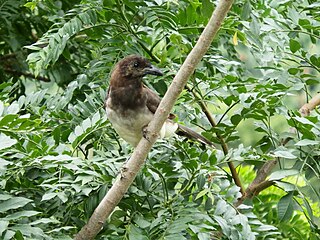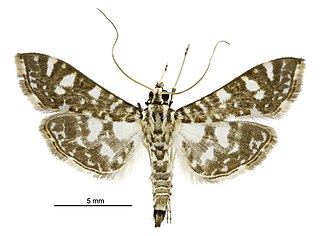
Belize is a country on the north-eastern coast of Central America. It is bordered by Mexico to the north, the Caribbean Sea to the east, and Guatemala to the west and south. It also shares a water boundary with Honduras to the southeast. Belize is a member of the Caribbean Community (CARICOM), and is considered part of the Caribbean region and the historical British West Indies.

Belize maintains 14 embassies to foreign countries, one consulate, and three missions to international organizations. In 1990, Belize became a member of the Organization of American States, and the Commonwealth of Nations in 1981.

The brown jay is a large jay native to Central America and southern Texas.

DOA: Dead or Alive is a 2006 action film based on the fighting video game franchise Dead or Alive developed by Team Ninja and published by Tecmo. It is directed by Corey Yuen and written by J. F. Lawton and Adam and Seth Gross.

Dieffenbachia seguine, widely known as dumbcane, as well as leopard lily or tuftroot, is a species of Dieffenbachia, a flowering aroid plant of the family Araceae. It is native to the neotropical realm of the Americas, from extreme southern Mexico and Belize and much of Central America, as well as the northern half of South America. It is found on many Caribbean islands and territories, including Cuba, Grand Bahama, Grenada, Guadeloupe, Hispaniola, Îles des Saintes, Jamaica, Martinique, Puerto Rico, Saba, Saint Kitts and Trinidad and Tobago. D. seguine is also found on the Galápagos islands of Santa Cruz and San Cristóbal, where it was likely introduced by humans.

Doidae is a small family of Lepidoptera with an exclusively New World distribution, with species occurring in Central America, the south-western United States, and northern South America.

Randall Desmond Archibald, better known by his stage name Randy Rampage, was a Canadian musician and founding member, bass player and vocalist of the hardcore band D.O.A., often referred to as the "founders" of hardcore punk.

Morelet's tree frog, also known as black-eyed leaf frog and popeye hyla, is a species of frog in the subfamily Phyllomedusinae. It is found in Belize, El Salvador, Guatemala, Honduras, and Mexico.

Doa is a genus of moths of the Doidae family.
Doa ampla is a moth of the family Doidae. It is found from western Texas and Colorado to Arizona, south into Mexico.
Doa cubana is a moth of the Doidae family. It is found on Cuba.

Doa dora is a moth of the Doidae family. It is found in Mexico, including Baja California and Guadalajara.

Chabulina onychinalis, also known as the swan flower plant moth and until recently called Glyphodes onychinalis, is a moth of the family Crambidae. It is native to the Afro-Asian Region, including India, Sri Lanka, Hong Kong, Thailand, Indonesia, Japan, Australia and New Zealand, and has been recorded in California since 2000.

Aethria haemorrhoidalis is a moth of the subfamily Arctiinae. It was described by Stoll in 1790. It is found in Belize, Ecuador, Guyana, Suriname and Brazil.

iNaturalist is an American 501(c)(3) nonprofit social network of naturalists, citizen scientists, and biologists built on the concept of mapping and sharing observations of biodiversity across the globe. iNaturalist may be accessed via its website or from its mobile applications. iNaturalist includes an automated species identification tool, and users further assist each other in identifying organisms from photographs and even sound recordings. As of 9 July 2024, iNaturalist users had contributed approximately 197,660,888 observations of plants, animals, fungi, and other organisms worldwide, and 290,007 users were active in the previous 30 days.

The western red bat or desert red bat is a species of microbat in the family Vespertilionidae. It is found in western North America and Central America.
Doa translucida is a moth in the Doidae family. It was described by Paul Dognin in 1910. It is found in Colombia.
Sphingicampa raspa is a species of giant silkworm moth in the family Saturniidae. It is found in Central America and North America.













